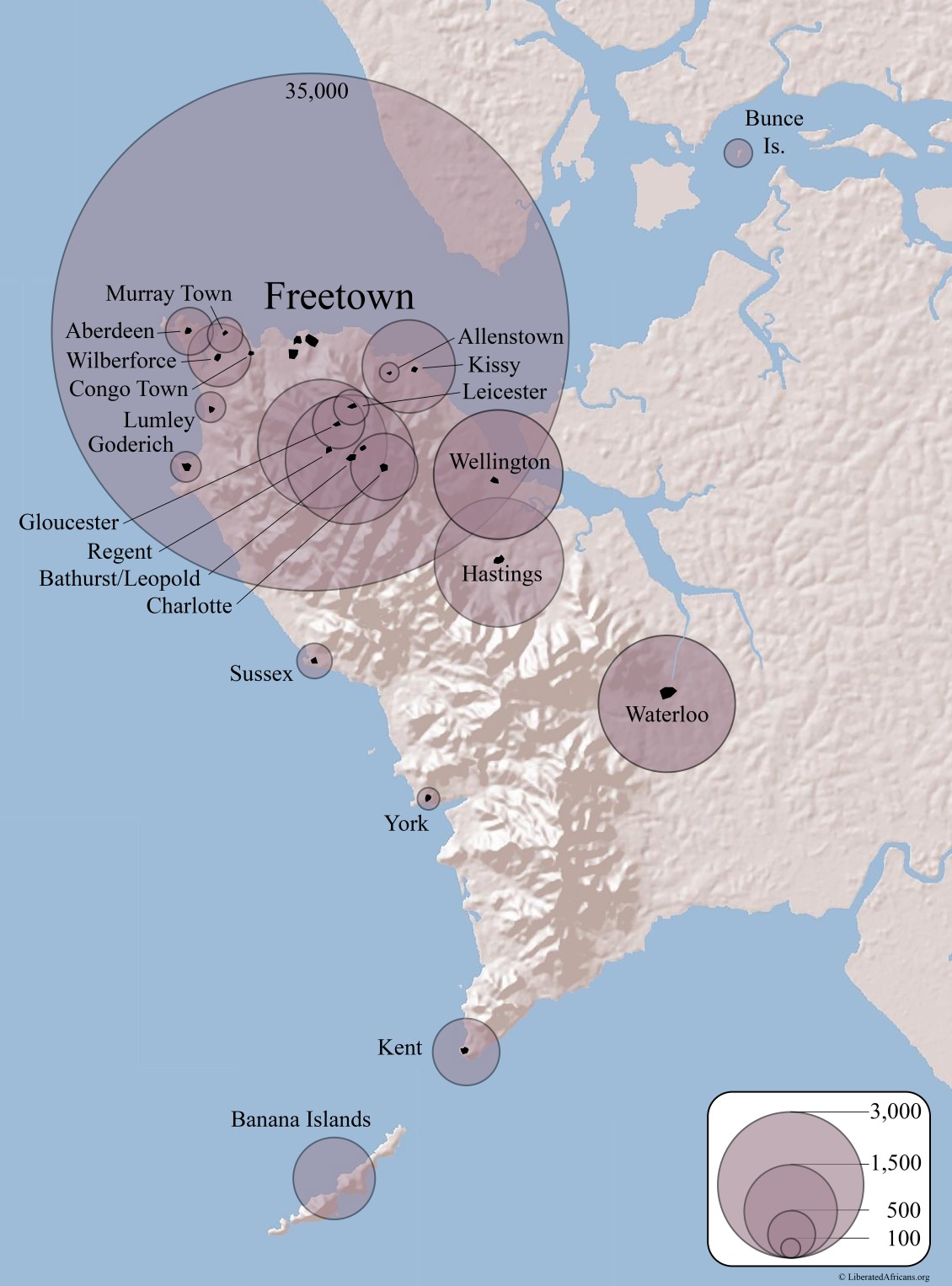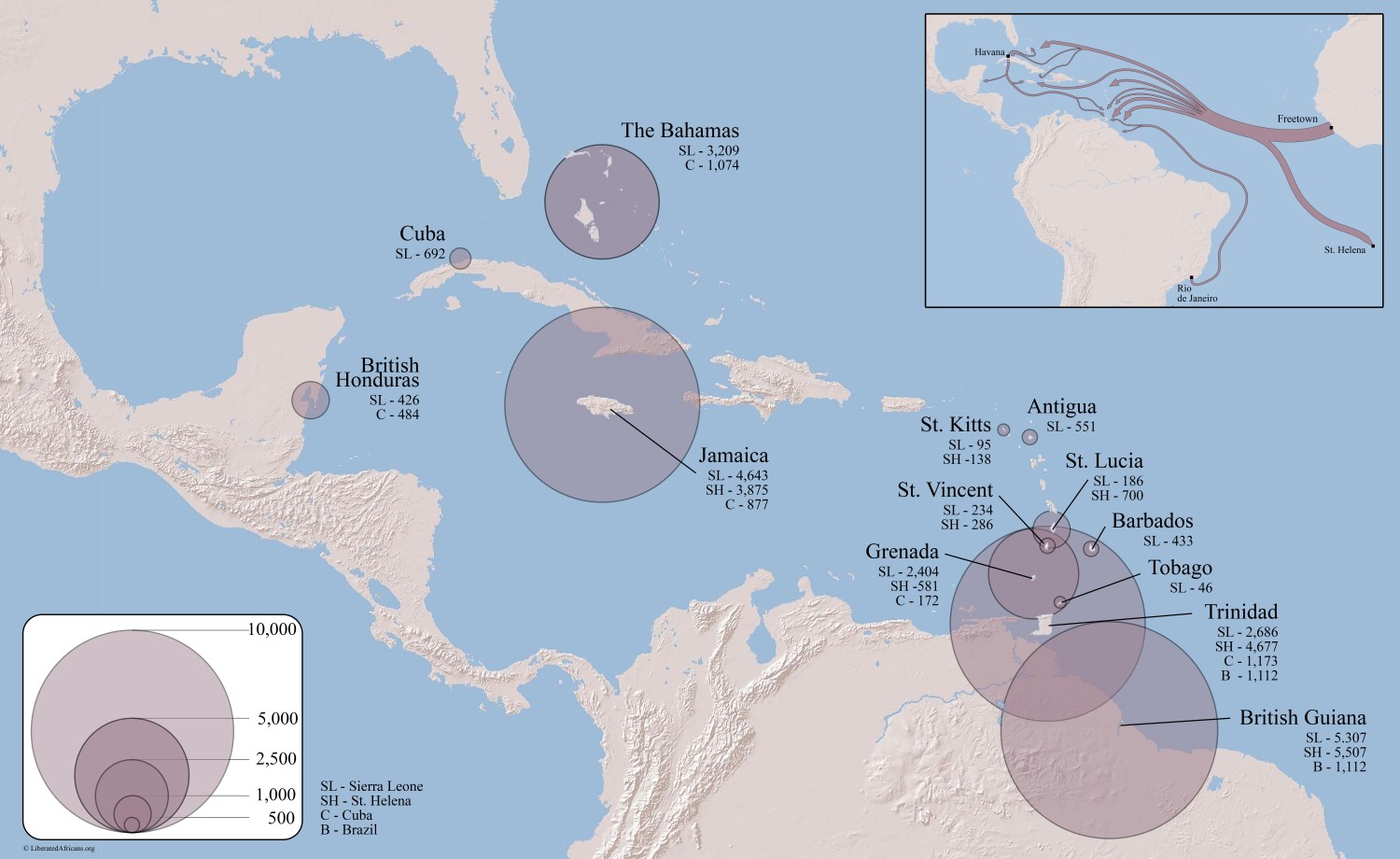Disposals, Depots, and Villages
|
Known Settlements of "Liberated Africans" in the Sierra Leone Peninsula before 1848 |
As "Liberated Africans" arrived to new places, sometimes in large numbers, it was often difficult for governments and their representatives to know where to settle these involuntarily indentured laborers. The British established precedents “to dispose” of these people in their colonies around the Atlantic and Indian oceans. After, other governments imitated, adapted, and debated the legality of the "disposal" policies and questioned whether the process amounted to another type of slavery. As was common, settlement strategies were typically based on an assumption that "Liberated Africans" were not ready to be entirely "free" and were required to fulfill contracts of indenture.
While not yet available online, the "settlement dataset" is under development to track the secondary and tertiary migrations of "Liberated Africans" around the world, that is after condemnation, purchase, or asylum. Currently, it has been possible to follow over 150,000 enslaved people after "liberation" from over 35 different departure locations and 185 landing destinations globally.
As Britain's main base of operations, authorities noted in the registers from Sierra Leone various settlements of "Liberated Africans" in various towns on the Sierra Leone peninsula before 1848. The majority ended up and likely remained in and around Freetown, although thousands were sent inland to form villages and many more were sent to the British Caribbean colonies.
|
Known Settlements of "Liberated Africans" from Sierra Leone, St. Helena, Cuba and Brazil in the British Caribbean after Emancipation in 1833 |
As the British removed enslaved people from Brazilian, Portuguese, Spanish, and US slave ships at various courts around the Atlantic worlds, they then relocated over 50,000 "Liberated Africans" from Sierra Leone, St. Helena, Cuba and Brazil to eleven different Caribbean colonies after Emancipation in 1833. British Guiana, Trinidad, and Jamaica each received around 10,000 involuntary African indentured laborers by the 1850s. These migrations demonstrate how the British continued to participated in the trans-Atlantic slave trade composed of "Liberated Africans." Along with indentured laborers from Asia, "Liberated Africans" arrived to the British West Indies after the government had paid millions of pounds to slave owners for the loss of labor following the general freedom of enslaved people at emancipation. The same pattern occured in the Indian Ocean as upwards of 10,000 "Liberated Africans" were resettled from Zanzibar, Aden, and Muscat to the Seychelles, Bombay, Freretown, among other places.
|
Known Global Migratory Patterns of "Liberated Africans" during the Age of Abolition (mostly British Empire) |
Other governments adapted these questionable labor recruitment strategies. After France’s Second Abolition in 1848, nearly 20,000 enslaved people were purchased in West Africa and sent to French colonies in the Caribbean, while another 35,000 indentures were taken from East Africa to Réunion. From the mid-nineteenth century onward, Portugal began shipping over 150,000 laborers from their colonies in Angola and Moçambique to work on the plantations on the islands of São Tomé and Príncipe. In another vein, the Dutch purchased and conscripted "Liberated Africans" from West Africa and sent them to Indonesia following the Java War. Likewise, the United States navy captured hundreds of enslaved people off the coast of West Central Africa and Florida, afterwhich they were settled in Liberia.
Post-liberation migratory patterns show how "Liberated Africans" continued to cross oceans to populate and provide labor for different colonies around the world. Tracking the displacement of indentured laborers from Africa in global perspective is a work-in-progress. Please check back periodically for the forthcoming release of the "settlement dataset" and other related resources.


